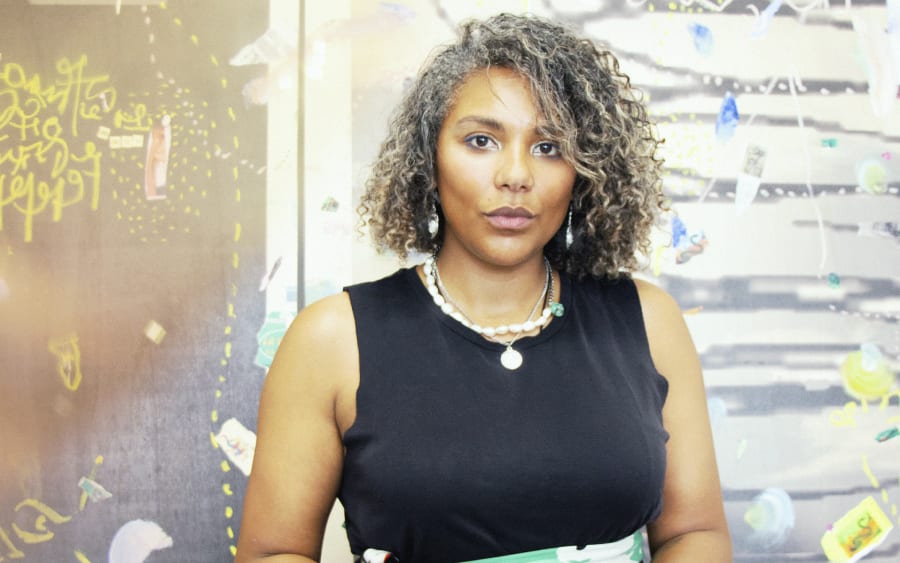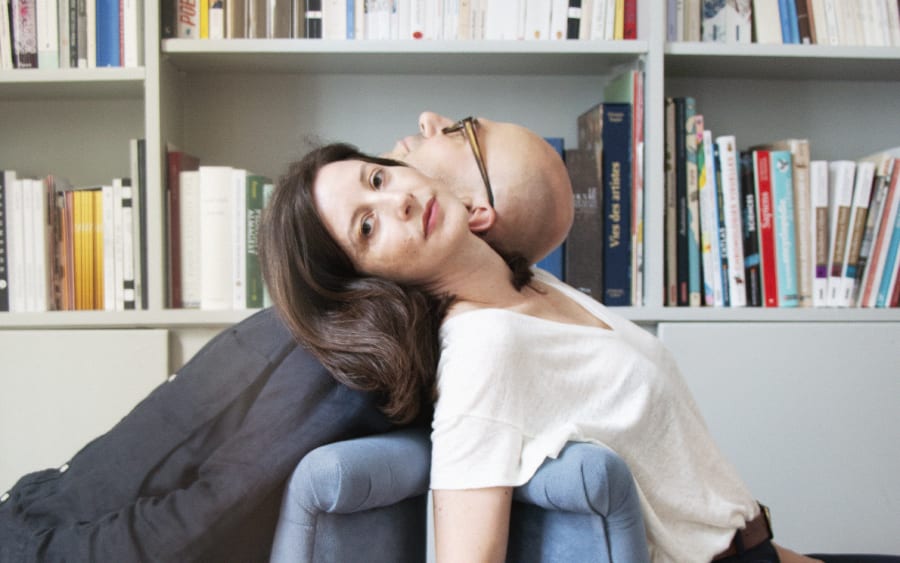In collaboration with the Centre Pompidou
Waterfalls cascading from cliffs, tornadoes sweeping across fields, mountains seen from the sky, caverns filled with stalactites, leafy trees: These are just some of the elements that can be discerned in Abdelkader Benchamma’s drawings, where all forms of nature – be they mineral, vegetal, or aquatic – seem to coalesce.
For the past 20 years, the French artist has deployed his black-on-white marbling on paper and walls, recently enlivening his work with dots of color. Benchamma uses ink, pen, and charcoal to compose abstract shapes that allow each viewer to identify familiar silhouettes in the manner of a Rorschach test. The viewer thus plunges into their inner landscape. Universal motifs intersect throughout the artist’s projects, appearing to form one immense, continuous artwork. This will continue at the Centre Pompidou, where Benchamma is nominated for the prix Marcel Duchamp and will present a new work.
The artist, born in 1975, began his practice by taking a risk: While a student at the Beaux-Arts de Paris in the 2000s, he chose to devote himself to drawing. Measuring himself against several traditions, from Baroque decorative arts to calligraphy, Benchamma has developed his own vocabulary. His sinuous, unbroken black lines recall the paintings of Henri Michaux and Fabienne Verdier, who were, like him, passionate about the art of Chinese calligraphy. In Benchamma’s work, the white space of the surface becomes just as important as the black, attesting to a graceful interplay between the empty and the full. ‘My practice emerges from the balance between repetitive actions and moments of sudden inspiration,’ he explains. ‘So, there is a struggle in how I create rhythm in my work, how I choose to add matter or leave spaces empty.’
While the forms that Benchamma sketches encourage viewers to project their unconscious onto them, they actually contain an abundance of inspirations: comets and meteorites engraved in 16th-century manuscripts; ghost ships reported in the early 20th-century American press; the marbling found in churches and mosques. These are images that the neuropsychology-loving artist describes as ‘fossils that pass through the sieve of [his] drawing.’ The artist cites the German art historian Aby Warburg’s Mnemosyne Atlas (1921-1929) as a conceptual reference. This immense corpus of images drawn from extremely diverse sources had a simple aim: to show that, regardless of epoch or civilization, there are a great many motifs and forms that reappear and cross-fertilize, implanted in our collective unconscious indefinitely.
Since his very first solo show at the Galerie du Jour (agnès b.) in Paris in 2005, Benchamma’s line has timidly ventured beyond paper. Over time, he began drawing in increasingly larger formats. Ten years later, he stretched his forms all the way out to the walls and ceilings of The Drawing Center in New York. From the rooms to the stairwell, visitors to the exhibition found themselves pursued by Benchamma’s graphic meanders, seemingly becoming protagonists in the work. In 2017, when he participated in the Sharjah Biennial, the artist continued his ‘dialogue with space’ by taking on even larger spaces, and even the surrounding architecture. From then on, his drawings became installations, and their location became an integral part of the work.
Last year, when taking over a space at the LagoAlgo cultural center in Mexico, Benchamma imposed a strict discipline on himself: mornings were devoted to drawing, afternoons to rest. Throughout the installation period, he went to bed early and paid close attention to his diet in order to remain at the height of his abilities for the task at hand. ‘The physical challenge brought me great pleasure,’ he says, ‘almost to the point of being addictive.’ Fortified by his experience and by a growing confidence in his practice, Benchamma now feels his movements are more relaxed; he accepts mistakes, smudges, and drips when they arise, or else he masks them with an artful camouflage while he slowly incorporates color into his work with touches of blue, red, or orange. ‘This letting go eliminates a lot of the fatigue for me,’ he adds. ‘Holding back, being afraid of making a mistake, and calculating how to use the white spaces was exhausting.’
Although murals are now an integral part of his work, he has not abandoned traditional paper or small formats, which he regularly incorporates in his works to give them even more rhythm. This is what viewers will discover at the Centre Pompidou with his latest project Au bord des mondes (At the edge of worlds), a new step on the long path he has followed for the past two decades. Here, there is no need to try to identify his inspirations; Benchamma wishes to emphasize the plasticity of his line. ‘Several fragments of drawings and stories are intertwined in this exhibition. It offers a new way to think about the world by making parallel realities coexist – but it also proposes a new texture, a material of its own,’ he explains.
This exhibition is also an opportunity for the artist to incorporate animation, a medium that he has only recently begun to work with. Using a large number of his digitized drawings, two animators created models, put them together in graphic combinations, which they animated in stop-motion. Thanks to this medium, the 40-something artist who is also a music lover, can now summon sound in his installations. He mixes his drawings with sonic compositions that combine natural noises and soaring, minimal melodies, as well as a great deal of silence – a way of further refining the texture of his work by enriching it with an unprecedented sensory layer.
This article is part of a collaboration with the Centre Pompidou on the occasion of the prix Marcel Duchamp 2024.
Abdelkader Benchamma is represented by Templon (Paris, Brussels, New York).
Prix Marcel Duchamp
Centre Pompidou, Paris
October 2, 2024 - January 6, 2025
Matthieu Jacquet is a writer based in Paris.
English translation: Jacob Bromberg.
All photographs by Aude Carleton for Art Basel.


